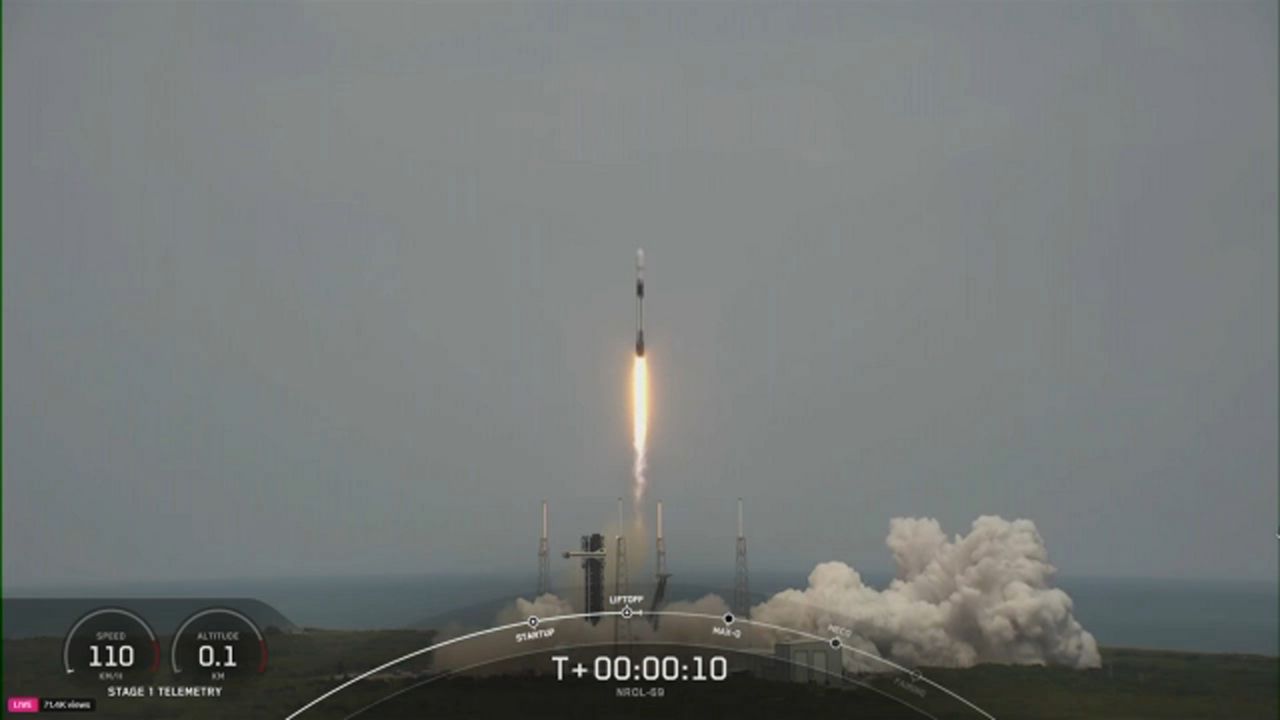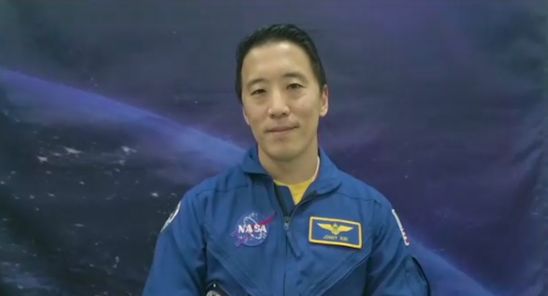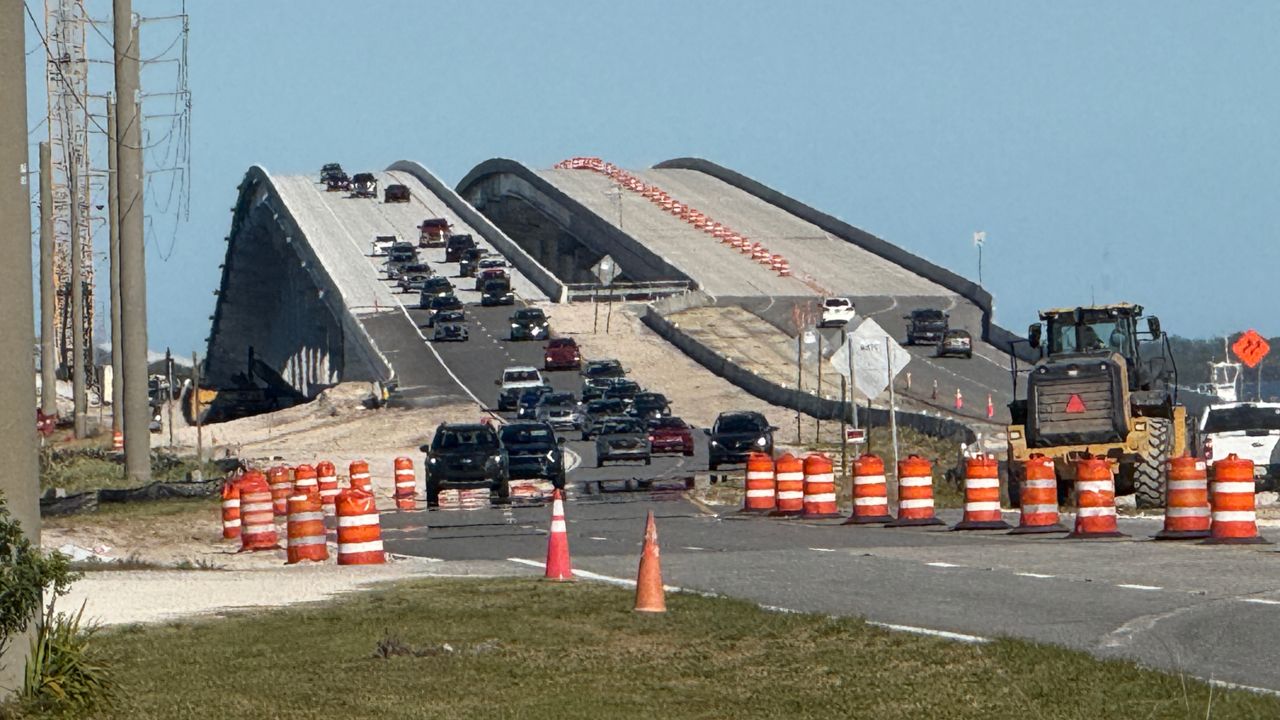KENNEDY SPACE CENTER — It was the most successful SpaceX launch you never saw as thick fog made it impossible for many to witness the Falcon Heavy rocket launch for the first time in three years, but it was something to hear as two sonic booms cracked through the skies.
What You Need To Know
- Falcon Heavy rocket lifted off from Launch Complex 39A at 9:41 a.m.
- Learn about the differences between the Falcon 9 and the Falcon Heavy rockets
- RELATED: SpaceX prepares to launch its first Falcon Heavy in 3 years
- Scroll down to watch the launch
It was the most successful launch that you never saw thanks to some thick fog.
— Anthony Leone (@AnthonyLeone) November 1, 2022
But at the end, you could sure hear the double sonic BOOMS!
Learn more about @SpaceX’s #FalconHeavy #launch here. https://t.co/Tpx3BCGFRE pic.twitter.com/QELx2vosBK
As the morning progressed, thick fog rolled into Launch Complex 39A at the Kennedy Space Center, preventing many from seeing the nearly 230-foot-tall Falcon Heavy rocket take off at 9:41 a.m. EDT and pierce through the gloom.
And the fog was like pea soup.
Well, the fog is a bit better compared to 20 minutes ago (see horizontal video).
— Anthony Leone (@AnthonyLeone) November 1, 2022
But the @SpaceX #FalconHeavy launch is still a go for 9:41 a.m.
Find out more about the launch here: https://t.co/Tpx3BCGFRE pic.twitter.com/L6amYUqpUs
And while most launch fans are used to seeing the rocket booster land on a SpaceX drone ship that is usually in the Atlantic Ocean, during this mission after the booster separation, Falcon Heavy’s two side boosters landed at SpaceX’s Landing Zones 1 and 2 at Cape Canaveral Air Force Station.
Falcon Heavy’s side boosters have landed – marking the 150th and 151st recovery of orbital class rockets pic.twitter.com/vK4ZdfDQtX
— SpaceX (@SpaceX) November 1, 2022
That generated a double sonic boom, which was more clear than a sight of the launch because of fog in the area. And bouncing off NASA's Vehicle Assembly Building, the sonic booms sounded like fireworks to many observers.
SOUND UP! The double sonic booms lived up to the hype for sure! #USSF44 #FalconHeavy @MyNews13 @Jon_Shaban @RebeccaTurcoTV pic.twitter.com/oFV5YOpjni
— Will Robinson-Smith (@w_robinsonsmith) November 1, 2022
There are some differences between the Falcon 9 and Falcon Heavy rockets.
About the mission
Tuesday’s mission is sending up the USSF-44 mission to a geosynchronous Earth orbit, SpaceX announced.
Because it is the most powerful rocket currently flying, it can also support some of the biggest payloads, like the USSF-44 mission launching.
The satellites, overseen by the U.S. Space Force’s Space Systems Command (SSC), were mated with the Falcon Heavy rocket on Halloween in preparation for the launch.
Falcon Heavy rolling up the ramp ahead of tomorrow’s targeted launch of the USSF-44 mission; weather is 90% favorable for liftoff pic.twitter.com/ZhLHUkSPKV
— SpaceX (@SpaceX) October 31, 2022
On board the Falcon Heavy is the LDPE-2, which is basically a ring-like spacecraft that’s designed to host up to six payloads, which was manufactured by Northrop Grumman. It’s the second in a three-mission series for the LDPE program, which is overseen by the Enterprise Enabler Development Branch of the Innovation and Prototype Acquisition Delta.
LDPE-1 launched as part of the STP-3 mission on a Falcon 9 rocket in Dec. 2021. LDPE-3 is set to launch as part of USSF-67 on a Falcon Heavy rocket no earlier than January 2023.
"The LDPE-2 platform allows the USSF to cost-effectively prototype new elements of future space architectures before making major investments across the enterprise," said Brig. Gen. Tim Sejba, SSC's Program executive officer for Space Domain Awareness and Combat Power. "This capability has broad potential to fill capability gaps in our space systems architecture and provide helpful services for our mission partners with frequent and low-cost access to orbit."
A spokesperson for SSC said that LDPE-2 is carrying six payloads. This includes three, which will remain hosted on board and three, which will separate from the spacecraft. Because of the national security nature of the mission, they are simply described as “payloads that advance technology concerning communications and space weather sensing.”
The LDPE program is significant for national security because it is “aimed at accelerating risk reduction efforts to inform future Programs of Record,” according to the official.
“LDPE builds off the success of the Air Force Research Lab (AFRL) ESPA Augmented Geosynchronous Launch Experiment (EAGLE) program, which took the standard interface for secondary payloads (the ESPA ring) and added communication and propulsion capabilities to create a fully functioning host satellite,” the official stated.
While not initially confirmed by SSC before the launch, Tetra-1 satellite was among the payloads flying for USSF-44, confirmed Millennium Space Systems as soon the mission lifted off.
Another set of payloads likely onboard are the LINUSS-A1 and LINUSS-A2 satellites from Lockheed Martin in partnership with Tyvak Nano-Satellite Systems, a subsidiary of Terran Orbital Co.
Lockheed Martin describes them as a pair of 12U CubeSats, roughly the size of a toaster, which are designed “to validate essential maneuvering capabilities for Lockheed Martin’s future space upgrade and servicing missions, as well as to showcase miniaturized Space Domain Awareness capabilities.”
And Tuesday’s launch is also the 50th for SpaceX this year alone.
Tuesday’s launch will be only the fourth Falcon Heavy launch since it debuted in 2018. The last time the Heavy went up was in June 2019 for the U.S. Air Force’s Space Test Program (STP)-2 launch. That mission launched 24 experimental satellites for the Department of Defense.
However, the SpaceX Falcon Heavy booster rocket exploded hundreds of miles off the coast of Cape Canaveral as it tried to land on the company's drone ship floating in the Atlantic.
The two side boosters successfully landed on land at Cape Canaveral Air Force Station about 8 minutes after launch. The center, main core booster headed for the drone ship, floating about 700 miles off our coast — about twice as far as it usually it is for a sea landing because of the requirements of the mission.
But the main booster core missed its mark and exploded in the ocean.









